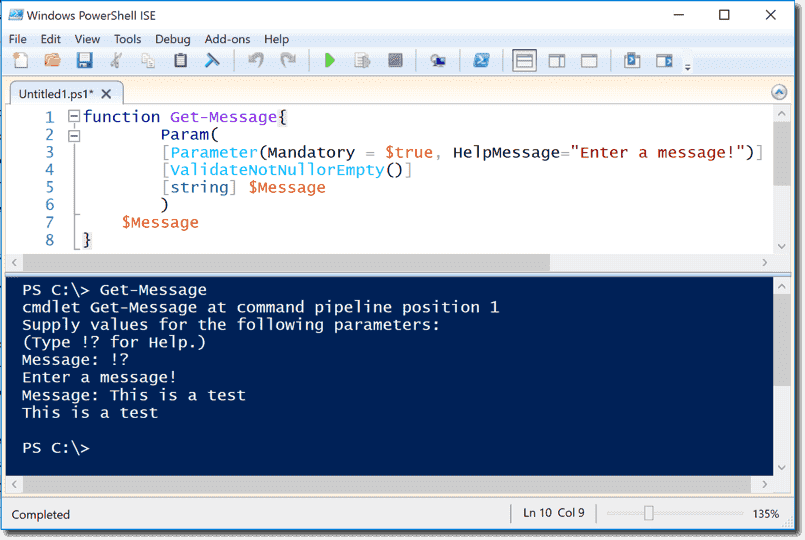

Likewise, it’s never a good idea to have passwords stored in plain text in memory either. You should know it’s not a good idea to store passwords in plain text in your scripts. Warning when no input Asking for Passwords You can see below that by executing Read-Host within the PowerShell console itself using the Prompt parameter, PowerShell is stopping all execution and displays my prompt message giving the user an explanatory message as to what we’re after.

For example, if your script requires a server name, you might choose to use Read-Host to prompt the user to input that when the script is run. This Prompt parameter allows you to give the script user some kind of indication as to what to input. Read-Host is a simple cmdlet but one that comes in useful when needing to get information from the script user.Īt it’s most basic, the Read-Host cmdlet simply requires using the Prompt parameter. The Read-Host cmdlet performs two functions in a PowerShell script it pauses execution and receives input. Let’s see some real-world applications on how we can use the Read-Host PowerShell cmdlet. Size = New-Object the Read-Host PowerShell cmdlet, you can interactively prompt for input from the script user. SHow Messagebox with message, title, Exclamation icon with 10 sec timeout PS C:\> Show-MessageBox -Message 'Everything Lost !' -Title 'This is the end' -Icon Exclamation -Timeout 10 SHow Messagebox with message, title, Yes/No buttons and Information icon Show-MessageBox -Message 'My Message' -Title 'MB title' -Buttons = 'YesNo' -Icon Information

Learn more about bidirectional Unicode characters To review, open the file in an editor that reveals hidden Unicode characters. This file contains bidirectional Unicode text that may be interpreted or compiled differently than what appears below.


 0 kommentar(er)
0 kommentar(er)
